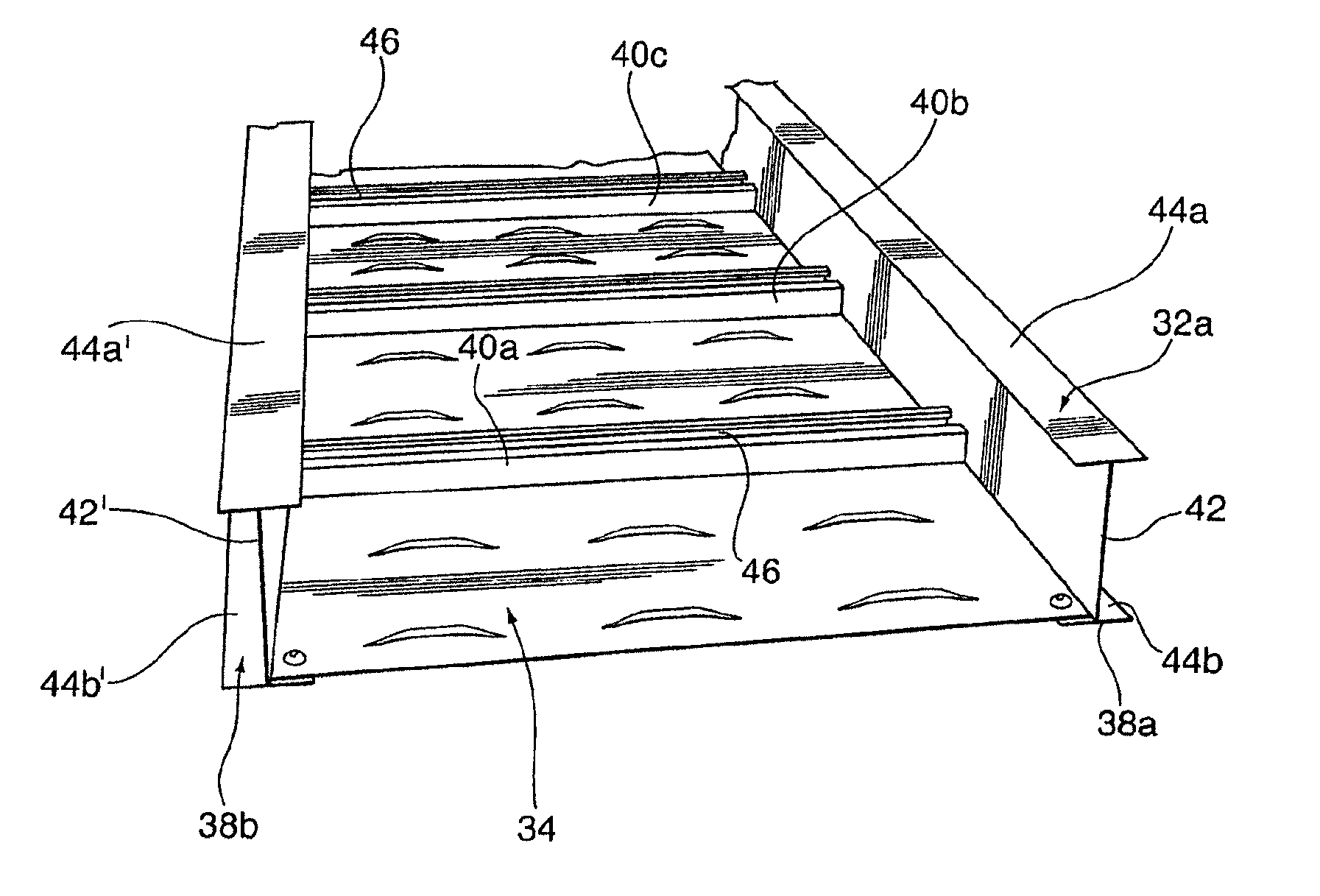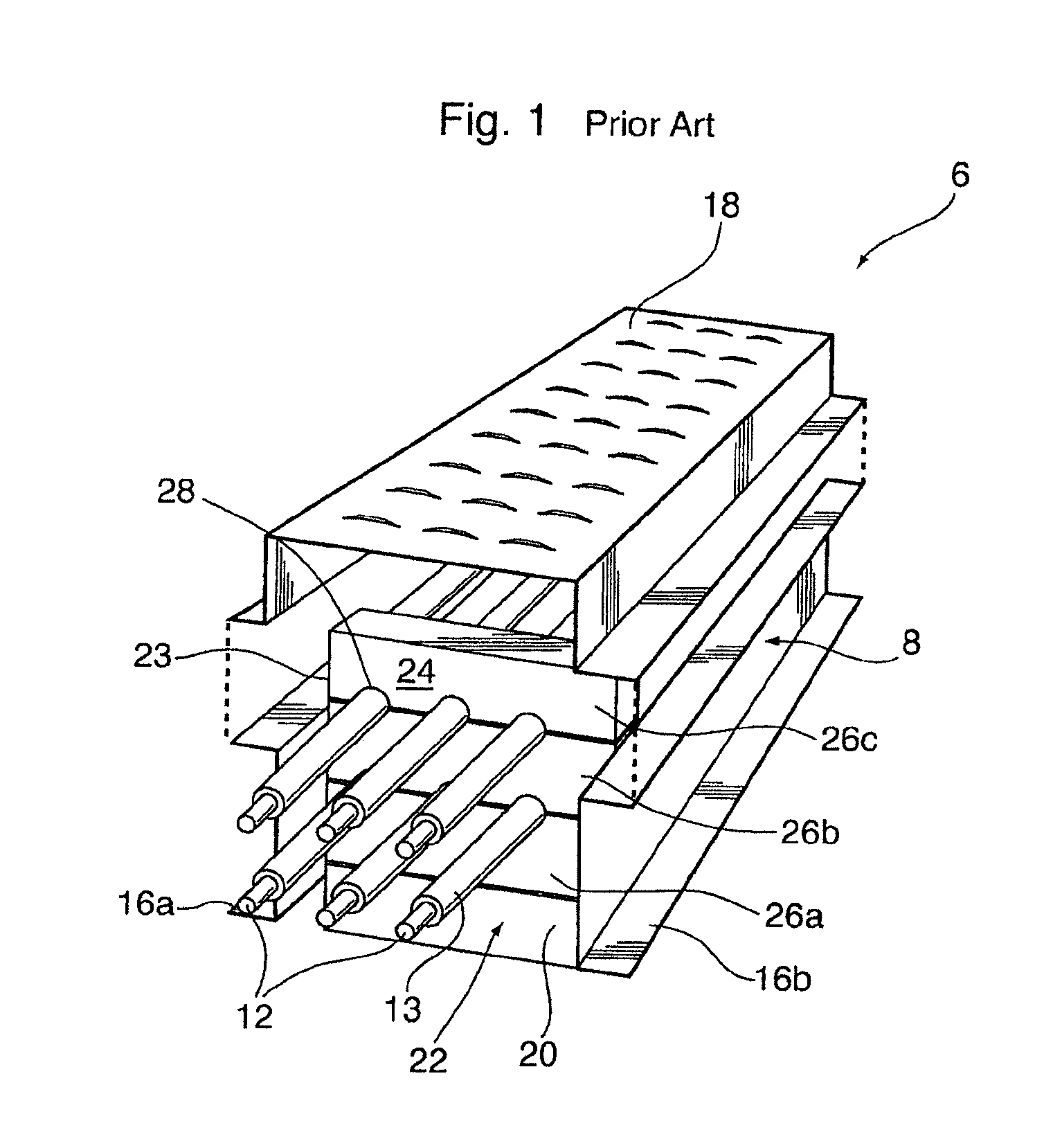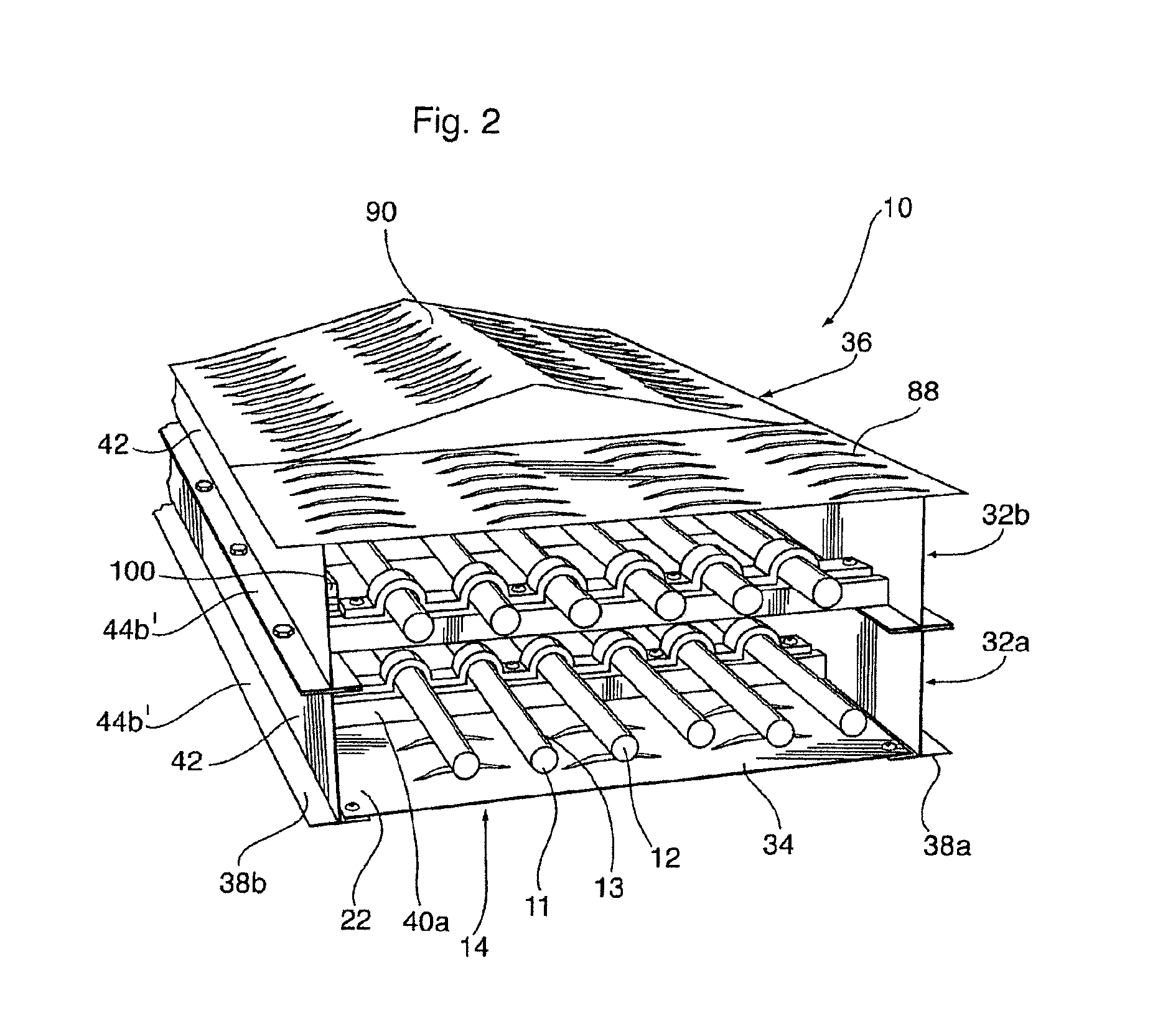Multi Level Cable Bus System with Modular Cable Trays
a cable bus system and cable bus technology, applied in the direction of power cables, electrical apparatus construction details, conductors, etc., can solve the problems of b>12/b> being both cumbersome and time-consuming, and the construction of three conductors becoming less economical and feasible to use, so as to minimize the possibility of excessive heating of cable conductors and minimize phase impedance
- Summary
- Abstract
- Description
- Claims
- Application Information
AI Technical Summary
Benefits of technology
Problems solved by technology
Method used
Image
Examples
Embodiment Construction
[0055]Reference is made to FIGS. 2 and 3 which illustrate a cable bus system 10 in accordance with a preferred embodiment of the invention used in the distribution and transmission of three-phase electrical power. As will be described, the cable bus system 10 is formed having one and preferably a number of aluminum (or other metal) enclosures 14 which define a longitudinally extending raceway 22 used to house and protect a series of insulated electrical cables 12.
[0056]FIG. 2 shows best each of the electrical cables 12 as comprising high amperature, low, medium and high voltage electrical cables which are provided in an electrically conductive core 11 layer which is typically formed of stranded copper wire, and an electrically insulating outer coating or sheath 13. In the embodiment shown, the cables 12 are longitudinally aligned in two vertically stacked, lower and upper cable arrays 30a,30b, each consisting of six cables 12 in parallel. As shown schematically in FIG. 3, the curren...
PUM
 Login to View More
Login to View More Abstract
Description
Claims
Application Information
 Login to View More
Login to View More - R&D
- Intellectual Property
- Life Sciences
- Materials
- Tech Scout
- Unparalleled Data Quality
- Higher Quality Content
- 60% Fewer Hallucinations
Browse by: Latest US Patents, China's latest patents, Technical Efficacy Thesaurus, Application Domain, Technology Topic, Popular Technical Reports.
© 2025 PatSnap. All rights reserved.Legal|Privacy policy|Modern Slavery Act Transparency Statement|Sitemap|About US| Contact US: help@patsnap.com



